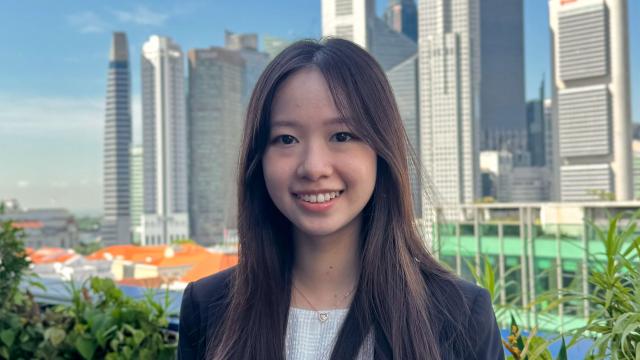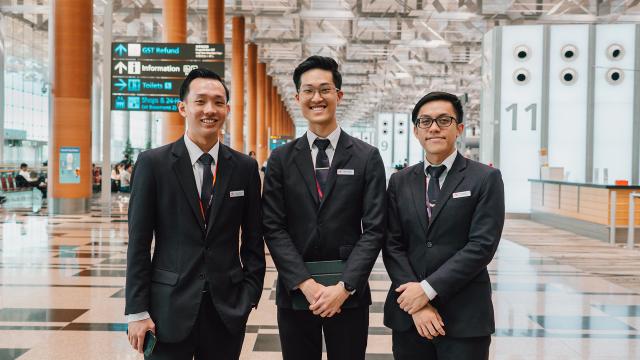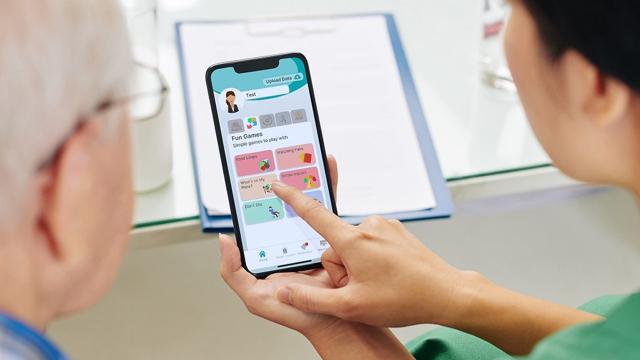Two SIT Faculty have been newly elected to lead the Council of the Singapore Association of Occupational Therapists.
For Assistant Professor Yeh I-Ling and Senior Professional Officer Gabriel Kwek, a sense of purpose is resonant in the work they do. When it comes to the conversation about community care, the two occupational therapists hope to do what they can to promote their profession.
Valuing their Vocation
Gabriel and Dr Yeh are part of SIT’s teaching fraternity in the Health and Social Sciences cluster. Since June 2022, they have taken on the mantles of President and Vice-President (Hon. Secretary) of the Singapore Association of Occupational Therapists (SAOT) respectively.
The roles sit well for both of them as they have been with the professional body for over a decade —“Longer than with any organisation I’ve worked with,” Gabriel quipped — and both found holding office a comfortable fit, having been presidents of their respective Occupational Therapy Student Committees previously.
Even as youths, their calling to occupational therapy was clear. Dr Yeh, who grew up in Taiwan, said the idea of helping people in a holistic way appealed more than other medical specialties. “OT’s integrated approach makes sense to me,” she said. She feels that leading in the SAOT is another avenue through which she can contribute.
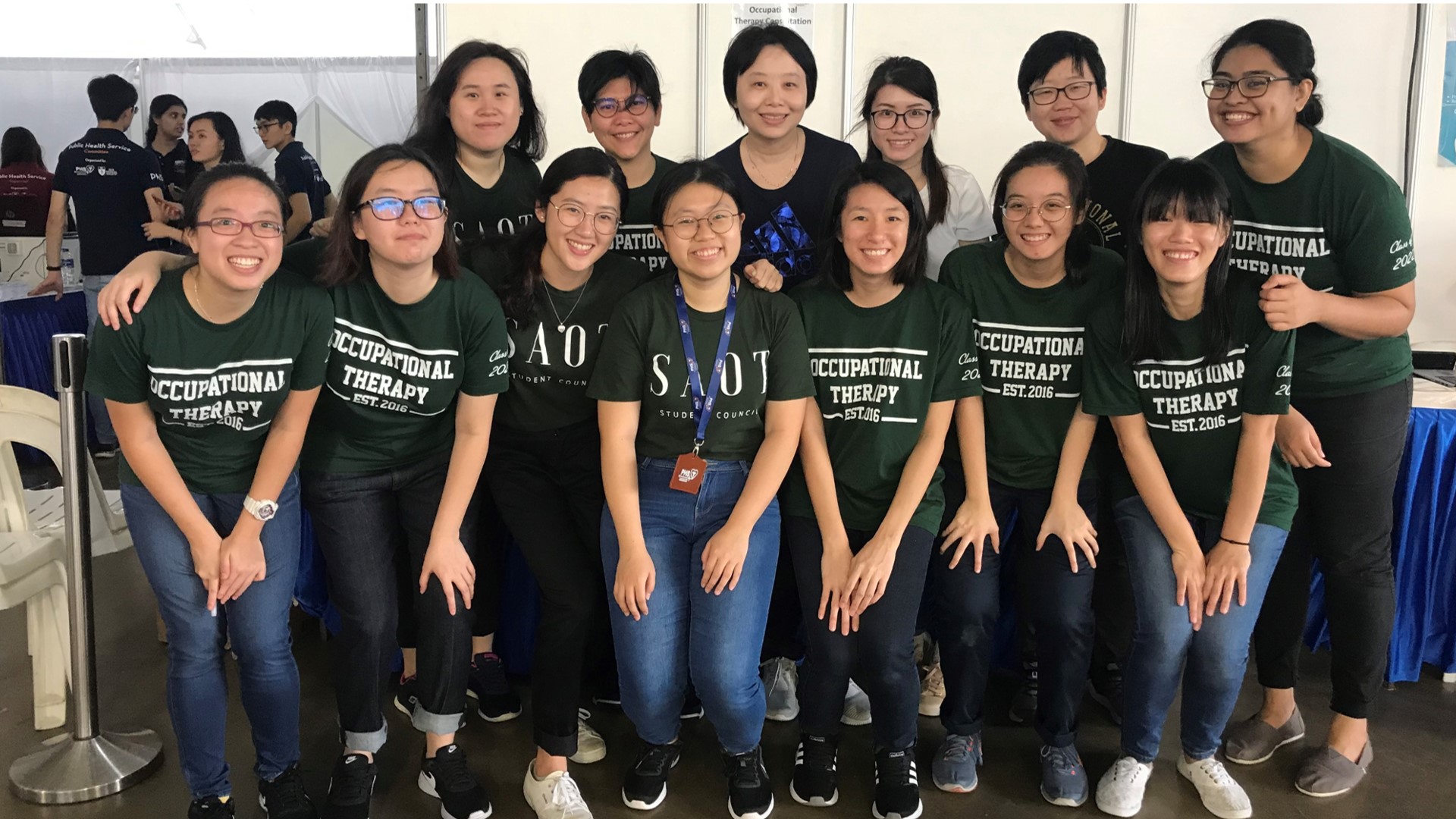
One of SAOT’s yearly initiatives where student volunteers from SIT Occupational Therapy assist with Public Health Screening to assess home safety and falls. Dr Yeh (back row, 2nd from right) assisted with the screening operations in 2019. (Photo taken pre-COVID19: SAOT)
Gabriel, meanwhile, attributed his career to serendipity. He related how the words on a university prospectus: ‘The art and science of how people engage’ and ‘If you really want to understand the meaning of life’ spoke so loudly to him, that he knew this was his calling.
Connecting and Communicating
Indeed, engaging people is a key theme for both Dr Yeh and Gabriel. The little day-to-day interactions with clients are what Dr Yeh treasures, and for Gabriel, any day spent with clients and their caregivers is a day well spent.
While their time spent in clinical settings is lesser, now that they are in academia, it is still an ethos they bring to both the SAOT and the SITizens they teach and mentor.
Relationships and connectedness come up a lot in talking about their work at SIT and with the SAOT. Whether it is the bond between allied health professionals and clients, the integration of persons with disabilities (PWDs) into the community, the coming together of OTs from different sectors, the peer mentorship amongst students, or the grooming of new leaders among the youths, they see how the building of bonds strengthens the profession as a whole.
Steering Strategies
As they assume the leadership of the SAOT, Gabriel and Dr Yeh are focused on bolstering active fields of practice and exploring emerging ones. With the nation embarking on the Healthier SG campaign, Gabriel sees more opportunities for allied health professionals to make an impact on society.
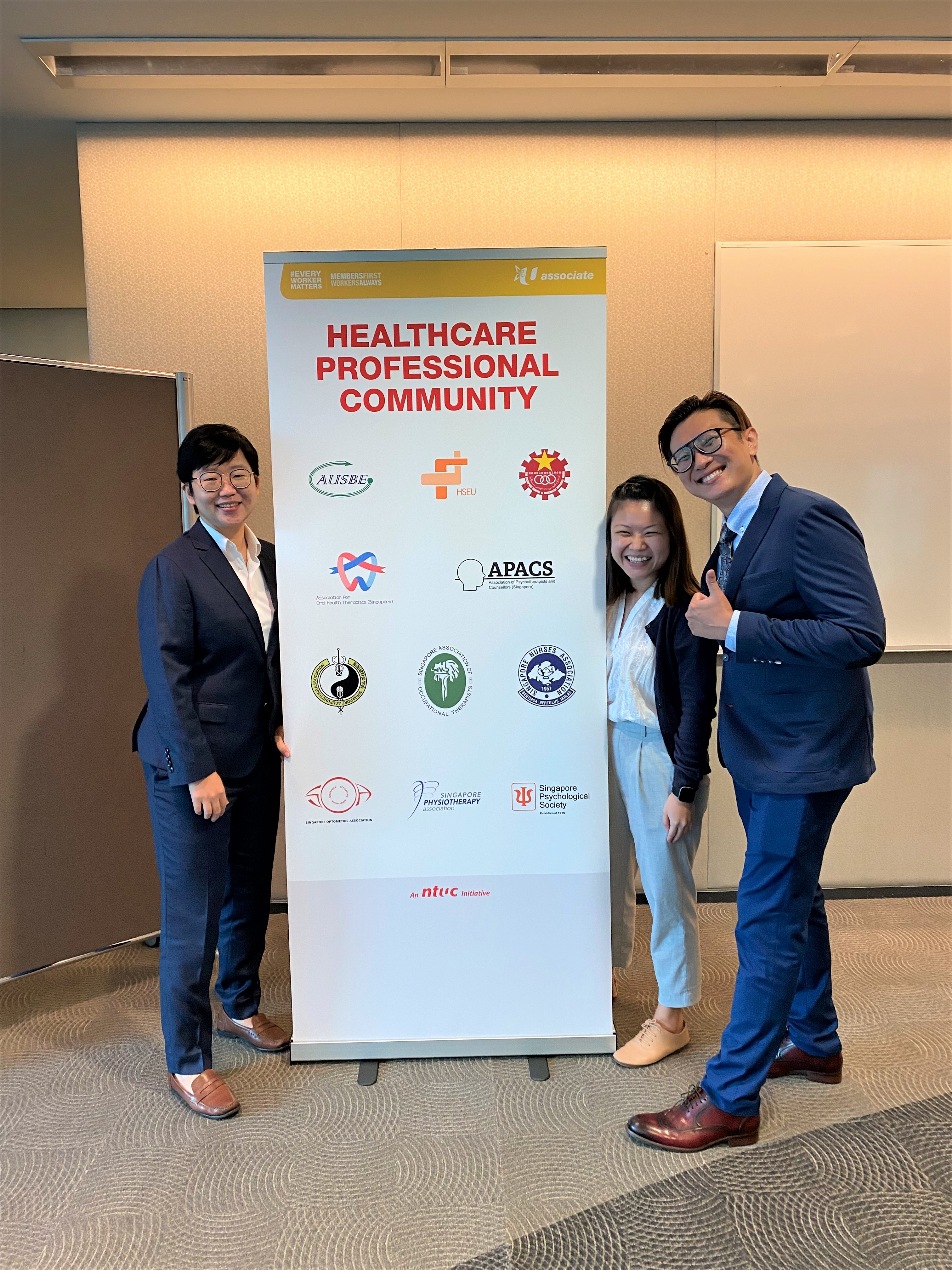
(From Left) SAOT members: Dr Yeh, Vice-President (Hon. Secretary); Yap Li Wen, Vice-President (Finance); and Gabriel, President, at an MOU signing ceremony between SAOT and NTUC in July 2022. (Photo: SAOT)
Already, the SAOT is taking the initiative in inclusivity. Clients join their conferences to share their perspectives, and PWDs also host and act as official photographers at association events.
Still, “There is so much more to address,” Gabriel admitted. But he and Dr Yeh are uniquely placed to make a difference.
Seeding and Synergy
SIT offers the only Occupational Therapy degree programme in Singapore. About 95% of these students are student members of the SAOT, with a handful of overseas students making up the rest. With over a hundred graduates each year, Gabriel is concerned about making the association more efficient and effective in order to help them in their transition and continuing professional development when they enter the workforce. To that end, he ensures students are able to network with senior professionals through its activities while staying up to date with industry practices through its profession-centric activities.
Dr Yeh noted that this is a great advantage in continuity. By immersing students in the professional environment, they are empowered to contribute at an early stage. Broad exposure leads to broadened minds - there are projects aplenty, although the pandemic years have made these difficult. There is applied research to conduct; there are learning journeys to various organisations to go on. The industry also benefits by tapping on student volunteers for diverse ventures.
The SAOT is a bridge between the student and professional communities.
Dual Duty
Being a key player in the SAOT is a plus for Gabriel too, as he is also part of SIT’s Occupational Therapy Clinical Practice Education committee that coordinates student placements across the health and social care industry. It eases communications between the university and the industry. He explained, “SIT leaders can lend their expertise on strategic areas for practice development and student involvement, while practitioners and industry leaders can plan how to streamline and advance current and emerging roles through innovative clinical placement and research projects.”
The 36-year-old added that the SAOT works with SIT to increase awareness of various types of research, “like a loud hailer publicising new and interesting evidence-based practices and projects”.
Wearing two hats means the educators are keenly aware of relevant skill sets to develop in the students. On her part, Asst Prof Yeh is doing her best to inculcate emotional sensitivity and a sense of responsibility in future generations. It is a must, she feels, on top of a scientific mindset and an eye for design.
Given how dynamic OT can be, Dr Yeh, 37, makes it a point to try to break down complicated processes for students’ learnings. As part of their degree programme, they are paired with community-dwelling PWDs to experience the complexities of the world around them. In the process, Dr Yeh hopes they build good relationships, just as she had when she was in practice.
“When the students go out on their Clinical Practice Education placements, you can see that they understand how everything comes together,” she said. “It is like their ‘lightbulb moment’ and it is always memorable when they suddenly get it.”
Developing Students, Developing the Profession
Gabriel knows the SAOT can develop the students further, as the development of professional qualities/values and becoming a holistic healthcare professional often needs to go beyond the formal curriculum.
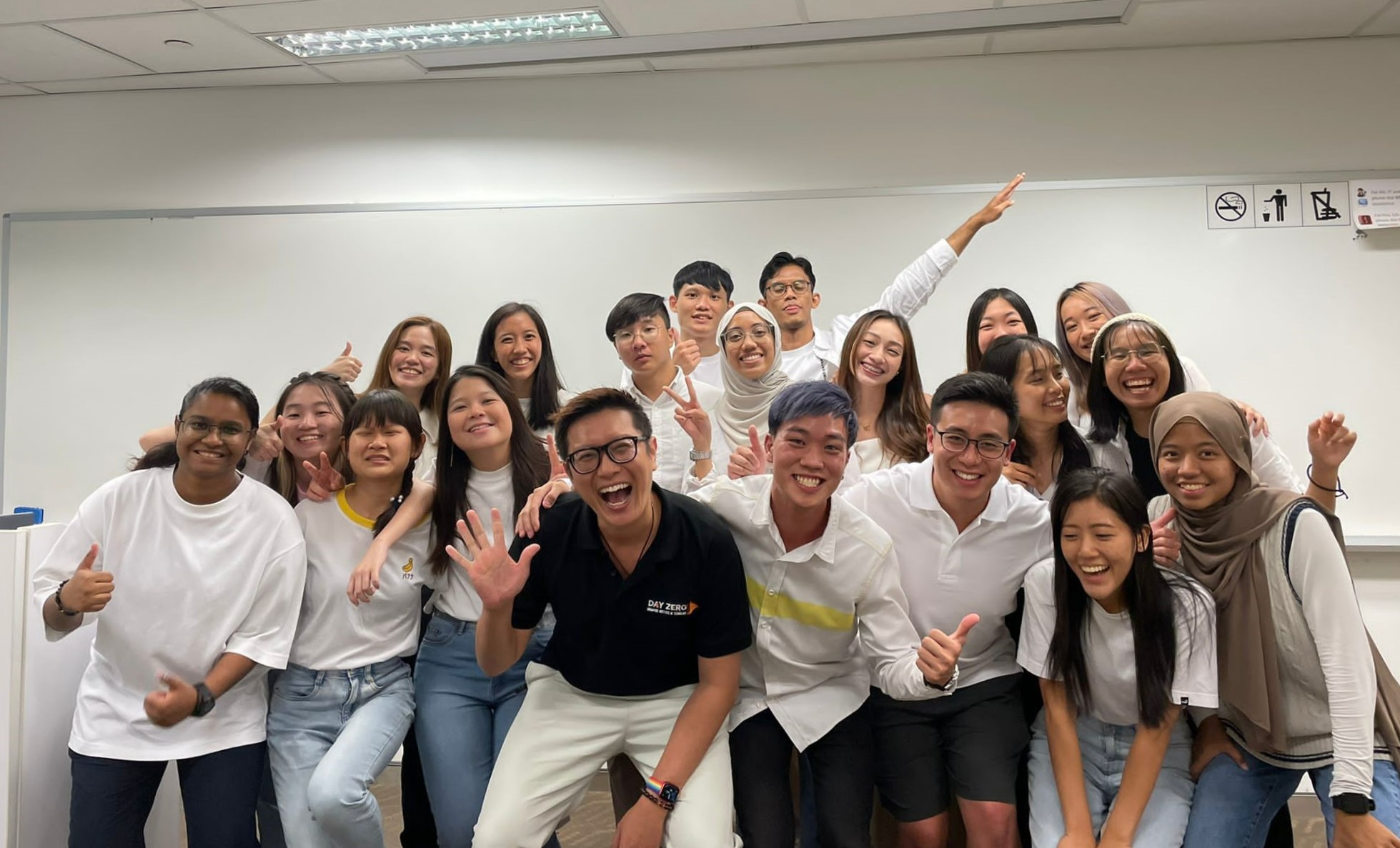
SAOT President Gabriel (centre) with the Singapore Association of Occupational Therapists Student Committee (SAOT SC) members. (Photo: SAOT)
The SAOT President said, “The Association provided many learning opportunities and networks for my growth as a healthcare professional; now I’m passing the advantage on to these students.”
With Gabriel and Dr Yeh at the helm for the next two years, our students and the profession are certainly headed for success.
![[FA] SIT One SITizen Alumni Initiative_Web banner_1244px x 688px.jpg](/sites/default/files/2024-12/%5BFA%5D%20%20SIT%20One%20SITizen%20Alumni%20Initiative_Web%20banner_1244px%20x%20688px.jpg)
